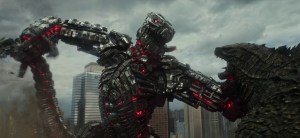Today saw the release of Wynonna Earp: Homecoming, the latest volume in writer Beau Smith’s 20-year run with his popular creator-owned character.
Videos by ComicBook.com
Wynonna, a descendant of famed lawman Wyatt Earp, is in law enforcement herself — working for the Black Badge Division, a secret government organization that takes on the supernatural and the extremely dangerous.
When audiences first met Wynonna back in the ’90s, the look and feel of the art suggested another in what was then a crowded field of female-led comics one step away from softcore pornography, where the only thing keeping impossibly-proportioned women busy was a little good old ultra-violence.

Some comics do and did steer into that skid, but others — like Tank Girl and Wynonna Earp — turned out to be more story- and character-driven, with the sexed-up look of the books mostly a byproduct of the times they were created in — and one which would be reined in once the comic was an established hit that didn’t need cheap thrills to bring in an audience.
“The two important things to me when I’m creating a character is that I want them to be compelling, and I want them to be likable,” Smith told ComicBook.com during a recent interview. “After that, it’s like the delivery room at the hospital — sometimes it’s a boy, and sometimes it’s a girl. This one’s a girl.”
Another way Wynonna Earp bucked the trend of then-conventional storytelling was that her origin was revealed more or less on the fly. Audiences met up with a 40-ish Earp, at the height of her powers and well-respected inside of the Black Badge Division. That’s something that allowed him to steer clear of the tropes of telling a character’s origin, and jump right to the “good stuff.”
Years later, though, Homecoming allowed Smith to return to the early days of Earp’s career and finally start to flesh out things that have been explored only in fleeting references over the years. It’s a strategy that turned into a sales success for the miniseries, which came around at the same time as a TV adaptation on Syfy.
“It ended up being a collaboration that me or Emily Anders, who is the showrunner and head writer of the TV series, did not plan but it just seemed to naturally happen,” Smith said of the recent IDW Publishing miniseries’ similarities to the TV show. “Pre-WE, anything before this series, I had always written Wynonna at the peak of her career — she was 35 to 40 years old. You know comics well: there’s not a lot of female charactrs in comics that are written in that age group and to me the older a person gets, generally the more interesting they become.”
Even the visual iconography of the series — on TV, Wynonna is younger, but less sexed-up. She’s more of a neophyte, but still a hardass — is getting a little bit of a tune-up in Wynonna Earp, which will continue in a new miniseries starting next month (the TV show has been picked up for a second season which will air in the spring).
“[Wynonna], in a previous series, was blonde,” Smith said. “I know that seems like a cosmetic kind of thing but as you get further down the road in the comic book series and possibly int he TV series, everyone’s going to find out that’s not a cosmetic thing. That’s actually a story — why she went from brunette to blonde. Further down the road, that is actually going to be part of a major storyline.”
And, no, the TV show isn’t driving the bus in terms of the comic’s content — but he’s not going to kid anybody and say that it doesn’t impact the way he thinks about the writing.
“Of course I want anybody who watches the television show and has never read the comics to be able to pick up the comic and feel at home. At the same time, I want respect for anybody who has read the comic since 1996 to feel like, ‘This is my character,’” Smith said. “So with this story, what I’m doing is a hybrid, and that was through my own choosing. I wanted to do Wynonna Earp at the age of 27 instead of 35 or 40. This is before she became the composed character that she has been in my series before. This is when she was reckless, this is when she first becomes a part of Black Badge Division, and by the stars all being aligned, that’s what Emily had planned fo rthe wider-based audience of the TV series. When I got her bible and the first few scripts for it, it was one of those magic moments where I said, ‘We are on the same page and the same track, and we haven’t even spoken yet.’ That was a big, big thrill.”
With so many similarities, it might run the risk of being too similar to the TV show and losing some of the spirit of Wynonna Earp‘s previous, acclaimed comics adventures. For Smith, though, there’s one big piece of the story that diverges from TV — perhaps for creative reasons, or perhaps becuase of budget — in a way that allows Homecoming to retain some of the kinetic spirit of previous comics.
“It’s really neat for me, the fact that the television series happens pretty much int he town of Purgatory, where Wynonna was born and raised, and in my comic book series, I still continue what I’ve always done: taking her from place to place across the country in different adventures with different supporting casts,” Smith explained. “So it’s tradition with a new layer that we’re adding to it and hopefully everyone will truly get a kick out of all of that.”
Wynonna Earp: Homecoming is available at comic shops and on ComiXology now. You can pick up the first season of the show digitally on iTunes or Amazon.









